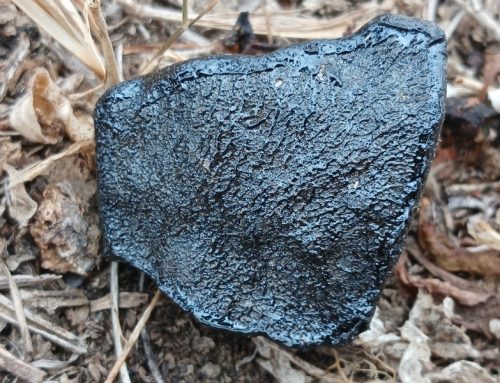 In the 1600s and the 1800s over 1,25 million British and European citizens were captured by North African slave traders and taken in chains to the great slave markets of Algiers, Tunis, Tripoli and Morocco. Prodded and examined like livestock, the white slaves were sold to the highest bidder.
In the 1600s and the 1800s over 1,25 million British and European citizens were captured by North African slave traders and taken in chains to the great slave markets of Algiers, Tunis, Tripoli and Morocco. Prodded and examined like livestock, the white slaves were sold to the highest bidder.
They lived in terror. That sums up the lives of the sailors, fisherman and coastal dwellers of England, Ireland, Scotland, France, Spain, Italy, Portugal and beyond, some three hundred years ago. White men, women and children were regarded as ‘white gold’ by the ruling classes of North Africa’s Barbary States (Morocco, Algeria, Tunisia and Libya) and fetched a handsome bounty. Accordingly, they were ruthlessly hunted by pirates known as the ‘Barbary corsairs’ and sold as slaves.
Compounding the captives’ misery was religion. The rulers of North Africa were part of the expansive Islamic Ottoman Empire that had declared war on the Christian world. The white slaves, being Christian, were despised as spiritual enemies and treated as vermin.
This account of what happened to these hapless souls isn’t about Islam versus Christianity or black versus white; it is about what human beings do to each other irrespective of creed or colour in the name of ideology, power, money and greed.
Several historians have written about the epoch of white slavery in Africa; some have retraced the steps of the white slaves from their homes where they were captured, and to which most would never return.
“Christian slaves of European ancestry were hardly an uncommon phenomenon in the Barbary States,” writes Paul Baepler in White slaves, African masters. He describes the Barbary pirates as excellent seafarers and the coastal communities of Britain and Europe as offering easy pickings for the slave seekers who, he says, “sailed as far north as Iceland (where they went ashore and captured 800 slaves during one raid alone) and as far West as Newfoundland, Canada, where they pillaged more than 40 vessels at one time.”
In White Gold Giles Milton gives a vivid account of the white slave trade, based on letters and manuscripts from the time, several written by slaves. In one account Milton describes how in July 1625 a fleet of over twenty ships manned with Barbary pirates arrived in the thick sea mist and headed up the coast of Cornwall. “The flags on their mainmasts depicted a human skull on a dark green background – the menacing symbol of a new and terrible enemy.” By the time the navy was alerted it was too late.
Milton writes how the corsairs slipped ashore on the south Cornish coast while the villagers were gathered for prayer. Excerpts from the accounts of captives describe how men with shaved heads, dressed in Moorish djellabas and wielding scimitars, burst into the parish church and dragged sixty men, women and children from the church back to their ships. Others were dragged from their homes.
Many coastal communities were completely destroyed. In 1625 the mayor of Plymouth estimated that 1000 fishing boats were destroyed by the pirates and a similar number of villagers carried off into slavery in one summer alone.
Amongst the most notorious slave markets at the time was the souk in the walled city of Sale in Morocco, where the tyrannical Sultan of Morocco, Moulay Ismail, used white slave labour to build his “pleasure palaces” at the expense of thousands of lives.
Milton visited Sale, walking the same path “trodden by wretched European slaves – men, women and children whose steps were slowed by the weight of their iron chains and shackles. Black slave-drivers hauled them to the place of auction, which was held each week in the Souk el-Kebir.” He describes how the European slaves were “punched, pushed and harassed” through the narrow alleys leading to the souk (market).
Most disappeared without trace, subjected to a living hell, as described by captive Robert Adams who was captured in the 1620s: “I am here in Salley; in most miserable captivitye, under the hands of a most cruelll tyrant. He made me worke at a mill like a horse from morninge until night, with chaines upon my legges, of 36 pounds waights a peece.”
Adams described their living quarters, an underground dungeon with no light except for a small hole, where 150 to 200 of them were forced to live in their own excrement. Their daily diet consisted of a piece of course bread and water. Their matted hair and ragged clothes were riddled with lice and fleas, and they were brutally beaten daily, often on the soles of their feet until they bled, after which they would be made to run on stones and thorns. Some were dragged behind horses until they were torn to shreds; others were dismembered while still alive; others were castrated and forced to serve as eunuchs in the Sultans’ courts.
The North African slave owners took delight in torturing their slaves, including beating and disfiguring them until they renounced Christianity and declared themselves Muslim. Slaves were forced to disfigure pictures of Jesus Christ, as a demonstration of their new faith. Those who refused to convert to Islam were tortured to death. One account describes a woman slave whose breasts were burnt and molten lead was poured into her genitals.
The manuscript of a Cornish boy from Penryn named Thomas Pellow who was captured at sea in 1715 at the age of 11, which Milton quotes in his book, offers valuable insight into the persecution of the white slaves. He became a personal slave to the Sultan of Morocco, Moulay Ismail, in the imperial capital of Meknes. Despite being subjected to a botched circumcision operation after he was forced to convert to Islam (known as ‘turning Moor’), and thrashed senseless on many occasion, he survived to tell his tale after 23 years in captivity.
Pellow wrote that the Sultan of Morocco’s slaves came from every corner of Britain and Europe, and some were from as far afield as Scandinavia and Russia.
The Sultan thrived on tyranny, excess and pomp. His pleasure palaces were on a scale that surpassed every building in the known world (the palaces were severely damaged in an earthquake in 1755). An eccentric character, he sometimes wore peasant-style clothes, but when he chose to display himself, he wore cloaks embroidered with silver and gold and silk turbans held in place with jewels.
Pellow explained that one of the Sultan’s many perverted pastimes was to marry off his slaves. He was particularly fond of mulattos or mixed race slaves and started his own “breeding programme”, matching white male slaves with black North African women while white women slaves were incarcerated in his harem and forced to breed. He would line up his slaves and citizens and call out “that one, take that one”. Pellow, now a teenager, was part of this programme, and matched with a North African bride (who subsequently died).
During the 1600s and 1700s a handful of slaves managed to escape, but most perished in the attempt: they were either killed by spies and informers or they died from hunger or thirst. Accounts describe how they lived on wild flowers, grubs and unripe corn.
The British and European families of the captured slaves begged the church, the monarchs and associated authorities in their respective countries for help, but were met with a callous lack of concern. The English slaves were offered a glimmer of hope when King Charles I started to tackle the problem after acceding to the throne in 1625.
He dispatched a trusted member of his employ, John Harrison, to negotiate the release of all English slaves in Sale with the ruling sultan, Sidi Mohammed. An agreement was reached, which involved the exchange of cannons for the slaves, which the British throne believed to number about 2000 in Sale at the time. It turned out there were only 190 there, and they were portraits of human suffering: pale, ragged, malnourished and weakened by dysentery. Thousands had already been shipped to Algiers, and many more had died of the plague that had ravaged Morocco in 1626 and 1627.
The King’s interest in the plight of the slaves dwindled after Harrison’s mission until further raids on English coasts forced his hand and in the 1630s he vowed to crush the slave trade once and for all. This was at the time when black slaves were being shipped from West Africa to the Americas and subjected to appalling cruelty, including being jammed into ship holds without sanitation of fresh food. The slave trade in black Africans amounted to several million.
In his attempts to crush the slave trade King Charles I’s primary concern was for the English slaves, and he dispatched successive emissaries to try to buy them back. Some were fortunate and were sold by their masters for anything from 38 to 1 392 pounds. Women slaves fetched the highest price because they were used in the harems. These sums were enormous if you consider that even a wealthy merchant was lucky to make 40 pounds a year.
The crown’s funds were quickly exhausted, and, encouraged by the buy-back trade, the Barbary corsairs intensified their raids. This seesaw went on for decades. King Charles II went so far as to entertain the North African or Moorish rulers in London society in the 1680s, to little avail.
The French slaves were offered a glimmer of hope when in 1723 a group of French padres managed to rescue a small number of the oldest amongst them.
Pellow’s family and the families of the slaves at Meknes received little or no information about their loved ones until 1719 when a record and description of the slaves reached London. Next to Pellow’s name were two words every Christian family most feared: “turn’d Moor”.
Sultan Moulay Ismail died in 1727 and was succeeded by his son Ahmed ed-Dehebi, who devoted the greater part of his day to eating and drinking. Pellow remained in slavery until 1737, when at the age of 33 he managed a successful escape. Previous attempts had failed and almost cost him his life. It took him almost a year to find his way home, and in October 1738 he finally made it back to Penryn. “It is impossible for me to describe the excessive joy I felt after my so long and grievous servitude amongst the barbarians,” he wrote. Finally, Pellow came face to face with his mother and father. They did not know their son at first and he did not know them, as they had last seen each other when he was a young boy.
Pellow’s return far from marked the end of the white slave trade, which continued well into the 1800s, when the United States of America, Britain and several European nations fought and won two wars against the Barbary pirates. An Anglo-Dutch raid on Algiers in 1816 was particularly effective, destroying a considerable percentage of the pirate fleet.
The Barbary empires went into decline from then onwards but the white slave trade continued, albeit to a lesser extent, even after France took control of Algeria and Tunisia in 1830 and 1831, and Britain passed the Slavery Abolition Act of 1833. At the same time European governments passed laws granting emancipation to slaves.
The power of the sultans, North African merchants and slave traders gradually diminished through the decades as Europe’s power increased. Italy ultimately took control of Libya (Tripoli) in 1911 and in 1912 Morocco became a protectorate of France.
A century later in 2012 we would hope that the slave trade were an atrocity confined to history books. Tragically this is not so. The slave trade of all races, now known as “human trafficking”, remains a highly lucrative and thriving industry. The United Nations has identified it as the fastest growing and most profitable illegal industry in the world, second only to drug trafficking. In 2008 the United Nations estimated that nearly 2,5 million people from 127 different countries are currently being trafficked into 137 countries around the world. Profits are estimated into the billions of dollars. And so it is, that as you read this, someone, somewhere is living in unspeakable circumstances, hoping against the odds that someone will respond to their plight and rescue them.




